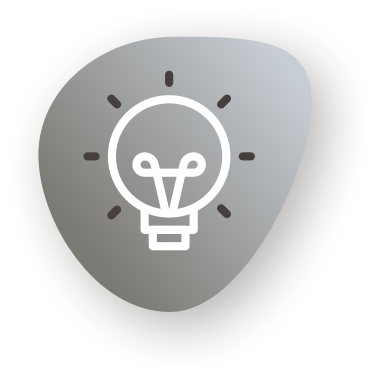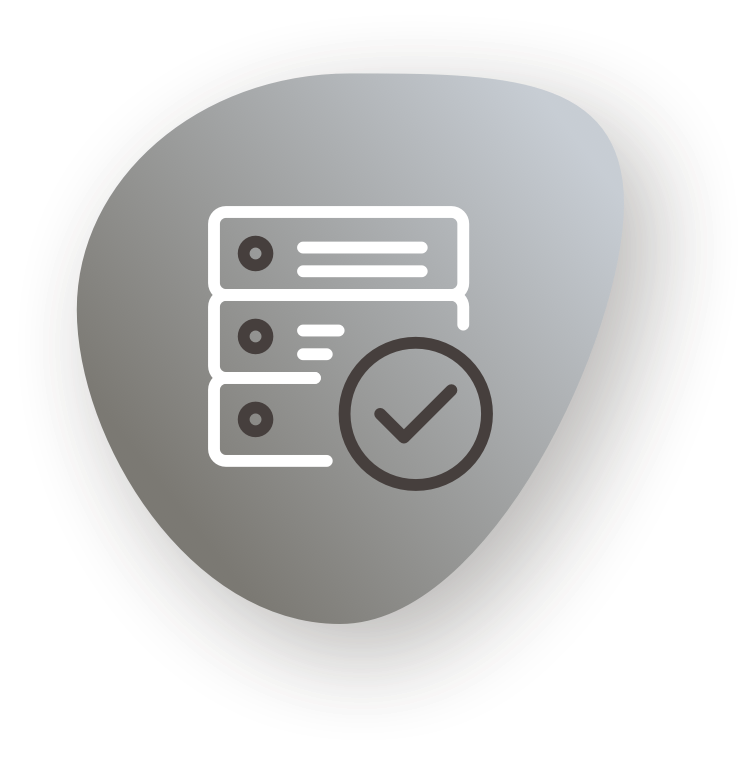Customer journey mapping is the first and most important step in providing a great customer experience.
Customer experience is complicated and the list of its related buzzwords is a long one: “customer sentiment”, “customer success”, “customer satisfaction”, “customer engagement”, “customer retention”, and “customer loyalty” only scratches the surface. But how do you achieve any of these?
If you think a “superb product” is just what you need to incorporate these buzzwords into your strategy, you’re only halfway right. Customer experience starts before the conversion, so there’s a long journey before someone becomes a customer and uses your superb product. And by solely focusing on your product, you might be leaving a lot on the table.
What you need to do is have a map of your customer journey from way before they’re your customers. Using this map and the touchpoints included in it, you can provide a great customer experience and achieve overall customer satisfaction.
Let’s dive a little deeper.
What is a customer journey map?
A customer journey map is a visual representation that outlines the entire experience a customer goes through when interacting with a company or using its products or services. The map typically includes various touch points across different stages of the customer lifecycle, from initial awareness to post-purchase support.
These customer journey maps help businesses understand—at each stage of a customer’s journey—their perspective, emotions, pain points, and motivations. In this way, companies can enhance their overall customer experience by identifying opportunities for improvement and then optimizing those interactions.
Customer journey maps serve as valuable tools for aligning internal processes, fostering empathy within teams, and driving strategic decision-making to better meet customer needs and expectations. However, 30% of organizations struggle to use them effectively, so we’ll first go over the benefits and then lay out 5 steps for effective customer journey mapping.
Top 5 benefits of customer journey mapping
Customer journey mapping offers invaluable insights that empower businesses to enhance operations and elevate customer experiences. Why is that important? Because 93% of consumers are more likely to make a repeat purchase with a brand that provides excellent customer service and 80% of customers have stopped doing business with a company due to an experience that frustrated them. Let’s explore how this powerful tool can revolutionize your approach to customer service and business success.
1. Tailoring products/services effectively
Customer journey mapping illuminates the path your customers take, unveiling their preferences, pain points, and expectations throughout their interaction with your brand. This understanding empowers you to tailor your products or services to precisely meet their needs, fostering deeper connections and increasing satisfaction.
Some examples of this might include checkout optimization, providing personalized recommendations, proactive customer support, targeted marketing campaigns, and effective sales pitches.
By aligning your offerings with customer desires, you can create more meaningful experiences that resonate with your target audience, ultimately driving loyalty and advocacy. This deeper understanding also informs product development and marketing strategies, ensuring that your offerings are not only relevant but also compelling to your customer base.
2. Enhanced operational efficiency
Enhanced operational efficiency through customer journey mapping involves systematically analyzing every touchpoint a customer encounters. By mapping out the entire customer journey, businesses can identify pain points and areas of inefficiency in their processes. This detailed understanding enables targeted improvements to streamline operations, reduce redundancies, and optimize resource allocation.
Some examples of this might include identifying bottlenecks, streamlining processes, optimizing resource allocation, and reducing costs.
By addressing these pain points, teams can work more effectively and efficiently, resulting in smoother workflows, quicker resolution times, and ultimately, improved customer experiences. With enhanced operational efficiency, companies can allocate resources more effectively, reduce costs, and focus on delivering exceptional service, leading to increased customer satisfaction and loyalty.
3. Better teamwork and collaboration
Better teamwork and collaboration are fostered through customer journey mapping by providing teams with a shared understanding of the customer experience. By aligning internal processes and breaking down silos between departments, teams can collaborate more effectively to deliver cohesive and seamless interactions across all touchpoints. This alignment ensures that everyone is working towards the common goal of providing outstanding customer service.
Some examples of this might include cross-functional workshops, shared customer journey maps, regular team meetings, and collaborative problem-solving sessions.
With improved communication and coordination, teams can leverage each other’s strengths, share insights, and work together to address customer needs more efficiently. As a result, organizations can enhance teamwork and collaboration, leading to improved efficiency, productivity, and ultimately, a superior customer experience.
4. Increased customer loyalty and retention
Increased customer loyalty and retention stem from the ability of customer journey mapping to pinpoint pain points and optimize interactions throughout the customer lifecycle. By understanding the customer journey in detail, companies can identify areas for improvement and implement strategic initiatives to exceed customer expectations.
Some examples of this include tailored loyalty programs, personalized communications, responsive and personalized customer support such as video customer support, and exclusive offers.
This proactive approach results in more enjoyable and satisfying experiences for customers, fostering stronger emotional connections and loyalty to the brand. Satisfied customers are more likely to become repeat buyers, advocate for the brand, and resist competitors’ offerings.
Ultimately, by consistently delivering exceptional experiences, organizations can cultivate long-term relationships, leading to higher customer retention rates and increased lifetime customer value.
5. Improved competitive advantage and profitability
Customer journey mapping enhances competitive advantage and profitability by providing insights crucial for strategic decision-making. By analyzing customer interactions at various touchpoints, businesses can identify trends, preferences, and areas for improvement. This data-driven approach allows companies to tailor their strategies to meet customer needs effectively, setting them apart from competitors.
Some examples of this include competitor analysis, market trend monitoring, resource optimization, and targeted marketing.
Informed decision-making enables businesses to allocate resources efficiently, prioritize initiatives, and seize growth opportunities. By continuously refining the customer experience based on journey insights, organizations can cultivate a reputation for excellence, attract more customers, and drive profitability in the long term. This strategic alignment ensures sustained success and positions companies as leaders in their industries.
5 steps to effective customer journey mapping
These five essential steps will guide you in creating impactful strategies that align with your customers’ needs and expectations, ensuring every interaction leaves a lasting impression. With these five strategic steps, you’ll uncover insights that will revolutionize how you engage with your audience and position your business for long-term success.
1. Define your customer personas
Defining your customer personas is the foundational step in customer journey mapping. It involves creating detailed profiles that represent your various customer segments based on demographics, behaviors, and preferences. By understanding who your customers are, their needs, goals, and pain points, you can tailor your strategies to better serve them at every touchpoint along their journey.
Customer personas provide a human-centric framework that guides decision-making, allowing you to personalize interactions and anticipate their needs. This step ensures that your customer journey mapping efforts are targeted and relevant, setting the stage for deeper engagement, enhanced satisfaction, and ultimately, long-term loyalty.
To do it right, ensure your customer personas are based on thorough research and represent diverse segments accurately.
2. Identify touch points across the customer journey
Identifying touchpoints across the customer journey involves pinpointing every interaction a customer has with your brand, from initial discovery to post-purchase support. These touchpoints can span various channels, including website visits, social media interactions, email communications, and in-person interactions.
By mapping out these touchpoints, you gain a comprehensive understanding of the customer experience, enabling you to identify critical moments of engagement, potential pain points, and opportunities for improvement. This step allows you to visualize the customer journey holistically, ensuring that no interaction goes unnoticed and providing a roadmap for optimizing each touchpoint to enhance the overall customer experience.
To do it right, thoroughly document and analyze all customer touchpoints to ensure a comprehensive understanding of their journey.
3. Gather data and insights
Gathering data and insights is a critical step in effective customer journey mapping. It involves both quantitative and qualitative data collection from various sources, including customer feedback, analytics, surveys, and customer support interactions. By analyzing this data, you can uncover valuable insights into customer behaviors, preferences, pain points, and motivations throughout their journey.
This step enables you to identify patterns, trends, and opportunities for improvement, providing a solid foundation for decision-making. Through data-driven insights, you gain a deeper understanding of your customers’ needs and expectations, allowing you to tailor your strategies and initiatives to better meet their requirements and deliver exceptional experiences at every touchpoint.
To do it right, utilize a combination of quantitative and qualitative data sources to gather comprehensive insights into customer experiences.
4. Create a visual representation of the customer journey
Creating a visual representation of the customer journey involves translating gathered insights into a tangible format that depicts the customer’s interaction with your brand. This can take the form of journey maps, diagrams, or flowcharts, similar to those above, illustrating each touchpoint and the customer’s emotions, actions, and pain points at each stage.
Visual representations provide a holistic view of the customer experience, helping teams understand the journey from the customer’s perspective. This visualization fosters alignment across departments, enabling everyone to see how their actions impact the customer journey. By visualizing the journey, teams can identify areas for improvement and develop targeted strategies to enhance the overall customer experience.
To do it right, ensure your visual representation accurately reflects customer interactions, emotions, and pain points throughout their journey.
5. Analyze and prioritize areas for improvement
Analyzing and prioritizing areas for improvement is a crucial step in effective customer journey mapping. It involves thoroughly reviewing the insights gathered from the mapping process to identify pain points, inefficiencies, and opportunities for enhancement. By carefully evaluating the data, teams can prioritize which areas to address first based on their impact on the overall customer experience and business objectives.
This step enables organizations to focus their efforts and resources on initiatives that will deliver the greatest returns, whether it’s streamlining processes, enhancing communication channels, or introducing new features. Prioritizing improvements ensures that resources are allocated efficiently and that efforts are aligned with strategic goals, ultimately driving meaningful and sustainable improvements in customer satisfaction and loyalty.
To do it right, prioritize areas for improvement based on their impact on the customer experience and strategic business objectives.
Conclusion
A customer journey map is a detailed visualization of each phase of a customer journey. In most cases, you’ll realize that in the act of preparing a customer journey map, you need to answer some core questions that challenge your understanding of your product and the market.
These are some questions you need to answer to create a good B2B customer journey map:
1- What vertical does your product belong to? Who are your customers? What job titles do your potential customers have and what are they responsible for? What are some potential customers that you’re not already targeting but you could with the right positioning? What are they concerned about the most in their career? How does your product help them with this?
2- How do your customers find recommendations? What are their online habits? What communities do they belong to? How can you show up on their radar online?
3- How can you distinguish yourself from competition in the eyes of your customers? How can you earn their trust? What are the channels they prefer to keep in touch with brands? How do they make their purchases? What are they concerned about when trying to make the purchase?
4- What do they expect from your product? What are some areas in your product that might let them down? How can you educate them to better use your product? How do their needs evolve and how do you keep up with their new needs?
Trying to answer these questions would make it easier for you to figure out customer touchpoints and create a customer journey map. You can find customer journey mapping examples in our previous article here.















